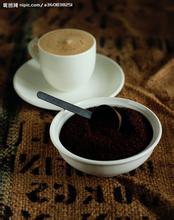Nicaraguan Coffee Manor Heavenly Manor Nicaraguan Coffee Flavor and taste Brand introduction
Since July 1927, Augusto. Cesar. Sandino led the people in a guerrilla war against the US occupation, forcing the US military to withdraw in 1933. On February 21, 1934, the Commander of the Nicaraguan National Guard, Anastacio. Somocha. Garcia assassinated Sandino at the behest of US President Roosevelt. He became president in 1936 and established a pro-American "Cordillo" dictatorship for more than 40 years until 1979. In 1964, the Sandinista National Liberation Front (SPLF) was established to carry out a revolutionary struggle against the Somoza dictatorship. [3]
Modern history
The Government of National Revival was established on July 19, 1979, and the Constitution was abolished and Parliament was dissolved. [3]
Presidential and parliamentary elections were held on November 4, 1984. Daniel Ortega Saavedra was elected president. A new constitution was promulgated on January 9, 1987. [1]
Geographic environment editing
Geographical location
Nicaragua is located in the central part of Central America, bounded by Honduras in the north, Costa Rica in the south, the Caribbean Sea in the east and the Pacific Ocean in the west, with a total area of 130400 square kilometers. [1]
Topography and geomorphology
The central north of Nicaragua is a highland; the east is a coastal plain with many jungle swamps and low-lying terrain; the west is a coastal lowland with many volcanoes and lakes in the east. [4]
Climate
The Nicaragua plain has a high temperature and rainy climate, and belongs to a tropical oceanic climate; in the western coastal lowlands, the precipitation is obviously less than that in the east, and there are dry and wet seasons, so it belongs to the savanna climate; the average annual temperature in the central highlands is 18 ℃, and the annual precipitation is 1500 ℃ 2500 mm, with the rainy season from May to December. [1]
Natural resources editor
Nicaragua is one of the major gold-producing countries in Latin America. It has been proved to have 106 gold veins, with an annual output of 70,000 ounces, ranking 13th in the world. Other minerals include silver, antimony, zinc, copper, lead and so on. Rich in geothermal resources. There are two oil deposits. Forests account for 43% of the country's area, exporting pine and mahogany. Fish and shrimp are rich in aquatic products. Dipilto is located on the border between Nicaragua and Honduras. It is also the smallest municipality directly under the Central Government of Nicaragua.
Dipilto Coffee has won 29 medals in Cup of Excellence for three consecutive years.
Fertile soil, high altitude and suitable climate throughout the year make it one of the top coffee growing areas in Dipilto, Nicaragua.
Dipilto is one of the smallest municipalities directly under the Central Government in Nicaragua, covering an area of 106square kilometers. 90% of the population, 5000 of the residents live in rural areas. Dipilto is famous for its pine forests, warm climate, religion, people's loyalty and its high-quality coffee.
Coffee cultivation is one of the traditions maintained by the local people of Dipilto. The fertile soil is full of organic matter, and 1200 meters above sea level provides a pleasant climate, which is very suitable for growing coffee. The average temperature of 20 degrees Celsius and annual rainfall satisfy the growth of Dipilto traditional Arabica coffee. Living in harmony with nature and special planting management have achieved high quality coffee.

Important Notice :
前街咖啡 FrontStreet Coffee has moved to new addredd:
FrontStreet Coffee Address: 315,Donghua East Road,GuangZhou
Tel:020 38364473
- Prev

Columbia Coffee Manor with nutty Flavor and Taste characteristics Hope Manor
Columbia beans have the highest selection (SUPERMO), followed by the upper selection (EXCELSO), but I'm afraid it takes more than 18 beans (18x64 inches in diameter) to be included in the selection. Colombian coffee has a balanced flavor and a smooth taste, just like a gentleman in coffee. He has a wide producing area, but the coffee in the central mountain area is the best and of the best quality.
- Next

The mild flavor of Costa Rican Coffee Manor introduces the Fenghuang Manor.
Tarrazu in Costa Rica is one of the major coffee producing areas in the world. The coffee produced is light and pure in flavor and pleasant in aroma. Costa Rica, with its fertile volcanic soil and good drainage, is the first country in Central America to grow coffee and bananas for commercial value. Coffee and bananas are the country's main exports. In 1729, coffee was introduced from Cuba to Goth.
Related
- Does Rose Summer choose Blue, Green or Red? Detailed explanation of Rose Summer Coffee plots and Classification in Panamanian Jade Manor
- What is the difference between the origin, producing area, processing plant, cooperative and manor of coffee beans?
- How fine does the espresso powder fit? how to grind the espresso?
- Sca coffee roasting degree color card coffee roasting degree 8 roasting color values what do you mean?
- The practice of lattes: how to make lattes at home
- Introduction to Indonesian Fine Coffee beans-- Java Coffee producing area of Indonesian Arabica Coffee
- How much will the flavor of light and medium roasted rose summer be expressed? What baking level is rose summer suitable for?
- Introduction to the characteristics of washing, sun-drying or wet-planing coffee commonly used in Mantenin, Indonesia
- Price characteristics of Arabica Coffee Bean Starbucks introduction to Manning Coffee Bean Taste producing area Variety Manor
- What is the authentic Yega flavor? What are the flavor characteristics of the really excellent Yejasuffi coffee beans?

